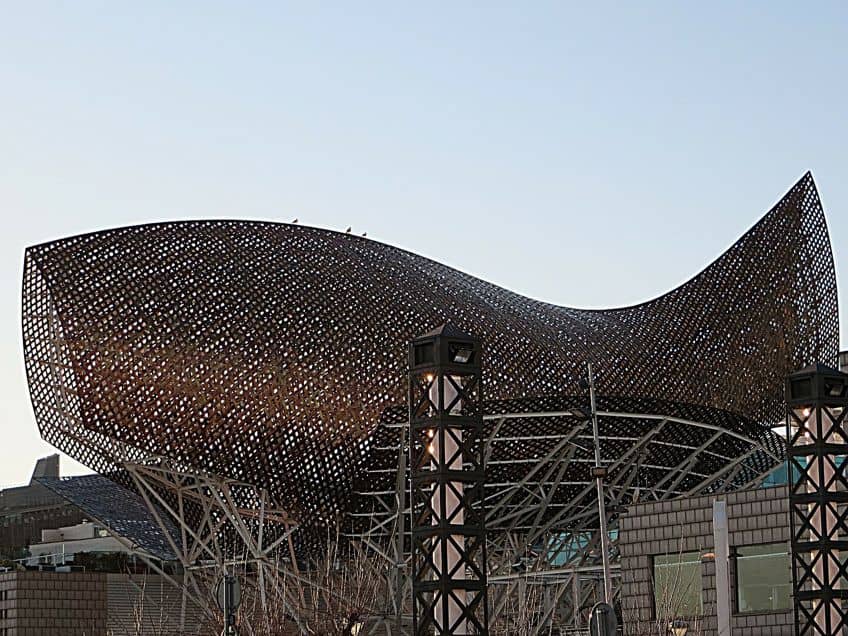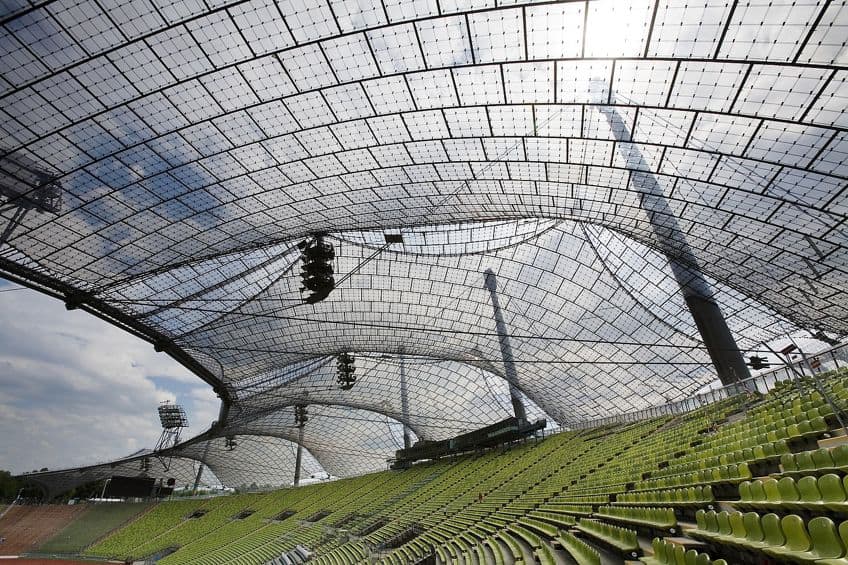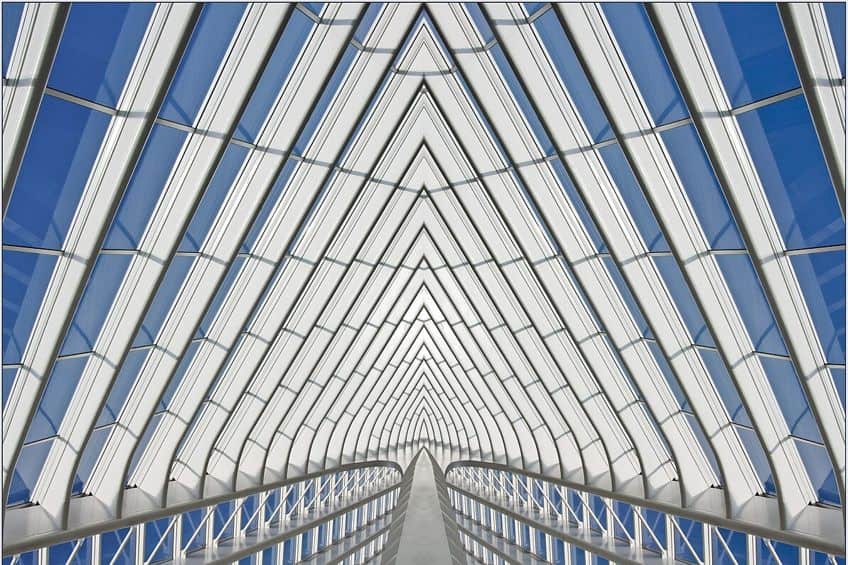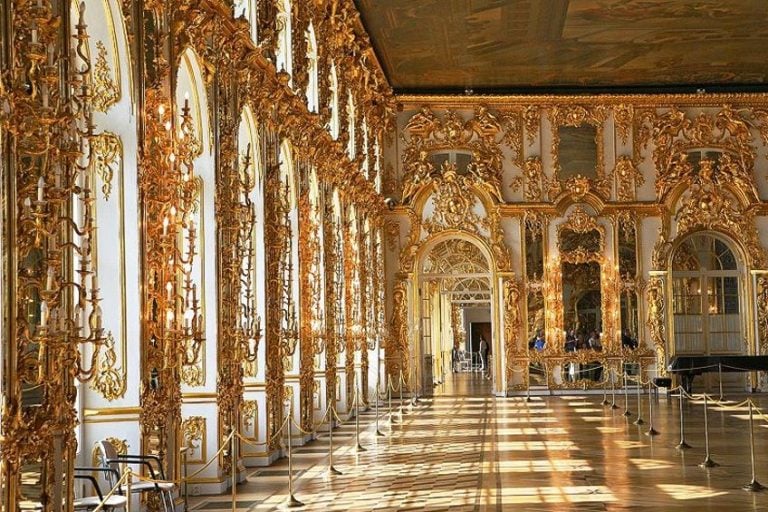Parametric Architecture – Innovations in Design and Construction
Welcome to the world of Parametric architecture, where lines blur between the tangible and the digital, and imagination knows no bounds. Imagine buildings that seem to dance with the wind, facades that morph like living organisms, and structures that defy conventional forms. Parametric architecture, a captivating fusion of art, mathematics, and technology, invites us to explore a realm where creativity intersects with computational precision, ushering in a new era of architectural innovation. Embark with us on a journey where algorithms shape space, and where design becomes a playground for boundless possibilities.
Table of Contents
Key Takeaways
- Parametric architecture uses algorithms to create dynamic and adaptable designs.
- Computational tools are integral to shaping the function and efficiency of these designs.
- This architectural approach enables the creation of responsive structures for future urban environments.
What Is Parametric Architecture?
Parametric architecture represents the cutting edge in design and architectural innovation, bringing a level of fluidity and adaptability to construction that traditional methods can scarcely achieve. This approach utilizes algorithmic thinking to generate complex structures, where variations in parameters can lead to a wide range of design outputs. Instead of the static forms of the past, parametric designs are characterized by their dynamic, often organic shapes that respond to their environment and the specific requirements of a project.
By harnessing computational tools and software, parametric architecture goes beyond superficial aesthetics—although its impressive forms often steal the spotlight. It’s a method deeply rooted in efficiency and functionality, aligning with the performance and sustainability needs of the modern world. Architects and designers use this design philosophy to create buildings that can adapt to changing user needs, environmental conditions, and material innovations, making parametric architecture a harbinger for the adaptive, responsive cities of the future.

Parametric architecture, characterized by computational creation, adaptability, and complexity, stands at the forefront of architectural innovation. Guided by algorithmic processes, designers craft structures that adapt to changing parameters, yielding a dynamic interplay between form and function. Embracing complexity, parametric design transcends traditional boundaries, giving rise to intricate forms that captivate the imagination. In this realm, buildings become expressions of mathematical elegance and technological prowess, shaping the landscape of tomorrow’s built environment.
By entering different variables, architects can explore a vast array of design possibilities, leading to unique and tailored solutions. This method breaks away from traditional linear design approaches and opens up a realm of creativity and efficiency. Parametric designs are often characterized by curving forms and flowing shapes, similar to what one finds in nature. This adaptability caters to both aesthetic fruition and functional needs. Parametric architecture is deeply intertwined with digital tools and software, which have become indispensable in facilitating this design approach.
It is a reflection of how the field of architecture is evolving with technology, embracing the digital era’s capacity for complexity and precision.
Foundations of Parametric Architecture
Parametric architecture signifies a shift in design approach, interweaving computational algorithms with aesthetic vision. It marks a departure from conventional architectural practice towards computational design.

Historical Context and Evolution
Parametric architecture can trace its lineage to the pioneering works of Antonio Gaudi and Frei Otto, who embraced natural forms and intricate structures. Gaudi’s use of geometric rules and Otto’s lightweight, tensile structures exemplify early parametric thinking. Through the years, the advent of powerful computing has enabled architects to apply parametricism more extensively.
The term itself emerged in the late 20th century, signaling a new era where design complexity could be managed and fine-tuned through algorithms.
Principles and Definitions of Parametricism
Parametric architecture operates on foundational principles of complexity and adaptability. Rejecting simplicity in favor of intricate and responsive designs, it navigates a realm where every architectural element is interconnected and primed to adapt to environmental or contextual shifts. This philosophy underscores the dynamic relationship between form, function, and the surrounding milieu, shaping a built environment that evolves harmoniously with its surroundings.

In architecture, Parametricism emerges as a defining approach where design transcends fixed constraints and embraces dynamic parameters. It heralds a transformative paradigm where architectural expression evolves through responsiveness and adaptability. Unlike conventional methodologies, Parametricism champions a fluid design process where variables dictate form, ushering in a new era of architectural innovation characterized by flexibility and ingenuity.
Parametric Design and Computational Tools
Parametric design in architecture harnesses the power of computational tools and algorithmic processes to facilitate complex design and modeling tasks. This approach has resulted in significant advancements in the exploration of innovative architectural formats and structures.

Software and Applications
Software plays a pivotal role in parametric design, providing the digital infrastructure required for architects to manipulate and explore complex geometries. For instance, Rhino is widely acclaimed for its versatility in 3D modeling and is often paired with the Grasshopper plugin, a visual programming language that enables designers to generate algorithmic patterns and execute parametric modeling without deep coding knowledge. Similarly, Autodesk Revit integrates well with Dynamo, another visual programming language that allows the manipulation of information and geometry, interfacing with Revit’s database for the creation of complex architectural elements.
GenerativeComponents, another powerful parametric tool, allows for the exploration of design possibilities through associative and parametric techniques. Key software includes:
- Rhino
- Grasshopper
- Autodesk Revit
- Autodesk Dynamo
- GenerativeComponents
Algorithmic and Generative Techniques
Algorithmic techniques in parametric design involve the strategic use of procedures and computations to generate design variations. AI is increasingly being leveraged within these tools to predict outcomes and optimize design elements based on pre-set goals and constraints. Generative design also emerges as a prominent aspect of parametric design, with the capacity to produce a vast array of designs through the definition of algorithms. In generative design, parameters act as constraints or rules which the design process adheres to, thereby generating solutions unforeseen by the human mind.

Visualization and 3D Modeling
Visualization tools are essential for bringing parametric designs to life, allowing architects and clients to see a realistic rendition of the object or space. 3D modeling software such as Maya and Houdini offer advanced functionalities for creating detailed, animated models, which are vital to understanding the spatial relations and aesthetics of design proposals. The capability to morph and iterate designs in real-time through these digital tools has dramatically expanded the creative boundaries for architects. Prominent tools include Maya (for animation and modeling) and Houdini (for procedural generation).
By integrating these advanced software applications, algorithmic techniques, and visualization tools into their workflow, architects and designers can more effectively engage with the manifold dimensions of parametric design.
Influences and Practitioners
The realm of parametric architecture has been shaped by visionary architects and inspired by the fluid forms found in nature, yielding functional and aesthetically compelling structures.

Iconic Figures in Parametric Architecture
Parametric architecture has been marked by the works of several iconic figures. Zaha Hadid and Patrik Schumacher are central to the movement, with Hadid’s unique avant-garde creations pioneering its inception. They led Zaha Hadid Architects, a firm known for its innovative and futuristic designs. Similarly, renowned architects like Frank Gehry and Santiago Calatrava have also significantly contributed to this field through their distinctive designs.
Jean Nouvel is another celebrated designer, whose approach has been influential in the development of parametric design principles.
Inspiration from Nature and Organic Forms
Parametric architecture often draws inspiration from nature and organic forms. The translation of natural patterns and structures into architectural design is a defining characteristic of this approach. The smooth curves and complex geometries seen in the designs are reflective of the order and chaos found in natural environments. This organic inspiration is evident in the sweeping lines and fluid forms of buildings designed by architects like Gehry, Calatrava, and Nouvel.

Benefits of Parametric Architecture
The benefits of parametric architecture are numerous. It allows for a high degree of customization and adaptation, resulting in environments that are responsive to their context and user needs. By harnessing the power of algorithms and computational design, parametric architecture is adept at optimizing structural elements, enhancing sustainability, and achieving an unparalleled level of detail and complexity in design expressions.
Its proponents argue for its efficiency and the potential for innovation it holds in architecture.
Implications and Applications
Parametric architecture significantly impacts the design, construction, and sustainability of buildings. This methodology enables architects to create adaptable and efficient structures tailored to specific needs and environments.

Structural Innovation and Flexibility
Parametric design facilitates structural innovation, allowing the creation of complex shapes and forms that were previously difficult to conceive and construct. It encourages flexibility in design by enabling changes to be made easily by adjusting underlying parameters. For instance, free-form architectural concepts can be iterated with precision, offering architects the ability to explore more dynamic and organic structures.
Design elements are defined by algorithms that can adapt to various criteria including material properties and spatial requirements, leading to more efficient and responsive designs.
Sustainable Design and Urban Planning
The integration of parametric design into sustainable design and urban planning is transformative. By incorporating environmental parameters, such as solar radiation and wind patterns, architects can optimize buildings for energy efficiency. Utilizing sustainability concepts, parametric tools aid in the creation of structures that harmonize with their environment, decrease resource consumption, and reduce waste. In urban planning, parametric methods support the development of cities that are more adaptable to change and growth, ensuring long-term viability.

Construction and Manufacturing
In construction and manufacturing, parametric design streamlines the process by creating detailed digital models that can be directly used for fabrication. This optimizes the use of materials and reduces the time needed for construction. Manufacturers benefit as the design-to-production cycle is shortened, allowing for more complex elements to be produced with greater accuracy.
Parametric architecture supports the advanced construction techniques necessary for modern, intricate designs, thereby enhancing the potential for innovation in building structures.
Future Cities With Parametric Architecture
Parametric architecture is rapidly transforming urban landscapes. This design approach leverages computational tools to create fluid, efficient, and innovative structures. As cities evolve, parametric design is leading to smarter urban planning, integrating technology and data to better respond to the needs of their inhabitants.
In the cities of tomorrow, parametricism emerges as a pivotal force shaping infrastructure and public spaces alike. Through its lens, infrastructure transcends mere functionality, embracing optimal aesthetics while fortifying resilience against environmental shifts. Meanwhile, public spaces become vibrant hubs of interaction, dynamically adapting to evolving social dynamics, thus fostering inclusivity and community engagement. In this visionary landscape, parametric design becomes not just a tool but a catalyst for the creation of urban environments that inspire, connect, and endure.

Innovative pavilions of recent years highlight the potential for parametric design to revolutionize temporary and permanent structures, showcasing an outbreak of technologies like AI and 3D printing. Such tools are increasingly accessible, pushing the boundaries of what architectural forms can be realized. Education is shifting to accommodate these changes, with architectural curricula increasingly focusing on computational design and parametric tools to equip a new generation of architects.
Yet challenges persist. Parametric techniques often require sophisticated data and careful planning. The complexity of these designs demands a high skill level from architects and urban planners. However, through continued innovation and skill development, parametric architecture is poised to become an integral part of the sustainable and dynamic cities of the future.
As we conclude our exploration of Parametric architecture, we find ourselves at the nexus of creativity and computation, where imagination knows no bounds and innovation thrives. In this dynamic realm, buildings become more than mere structures; they embody the very essence of fluidity and adaptability, responding to the changing needs of our world with grace and ingenuity. As architects continue to push the boundaries of design, Parametric architecture stands as a testament to the limitless possibilities of human imagination and technological advancement. So, let us embrace the future with open minds and adventurous spirits, as we embark on a journey where the lines between fantasy and reality blur, and where the buildings of tomorrow are limited only by the scope of our dreams.
Frequently Asked Questions
What Are Some Notable Examples of Parametric Architecture?
Parametric architecture has given rise to some of the most avant-garde structures in modern times. The Beijing National Aquatics Center, also known as the Water Cube, utilized an intricate weave of steel and ETFE to create an organic, cell-like structure. Another exemplary model is the Heydar Aliyev Center in Baku, Azerbaijan, designed by Zaha Hadid, which features sweeping curves and a fluid form that defies traditional geometric shapes.
What Are the Defining Characteristics of Parametric Architecture?
Parametric architecture is distinguished by its use of algorithms and computational processes to generate designs. This method allows for complex, dynamic structures that are responsive to environmental conditions, user needs, and material constraints. Key characteristics include an emphasis on interdependent design elements, adaptability, and the creation of unique, non-repeating forms that move beyond utilitarian solutions. This approach often results in buildings that blend variety and complexity, pushing the envelope of architectural potential.
Isabella studied at the University of Cape Town in South Africa and graduated with a Bachelor of Arts majoring in English Literature & Language and Psychology. Throughout her undergraduate years, she took Art History as an additional subject and absolutely loved it. Building on from her art history knowledge that began in high school, art has always been a particular area of fascination for her. From learning about artworks previously unknown to her, or sharpening her existing understanding of specific works, the ability to continue learning within this interesting sphere excites her greatly.
Her focal points of interest in art history encompass profiling specific artists and art movements, as it is these areas where she is able to really dig deep into the rich narrative of the art world. Additionally, she particularly enjoys exploring the different artistic styles of the 20th century, as well as the important impact that female artists have had on the development of art history.
Learn more about Isabella Meyer and the Art in Context Team.
Cite this Article
Isabella, Meyer, “Parametric Architecture – Innovations in Design and Construction.” Art in Context. February 27, 2024. URL: https://artincontext.org/parametric-architecture/
Meyer, I. (2024, 27 February). Parametric Architecture – Innovations in Design and Construction. Art in Context. https://artincontext.org/parametric-architecture/
Meyer, Isabella. “Parametric Architecture – Innovations in Design and Construction.” Art in Context, February 27, 2024. https://artincontext.org/parametric-architecture/.










Thank you